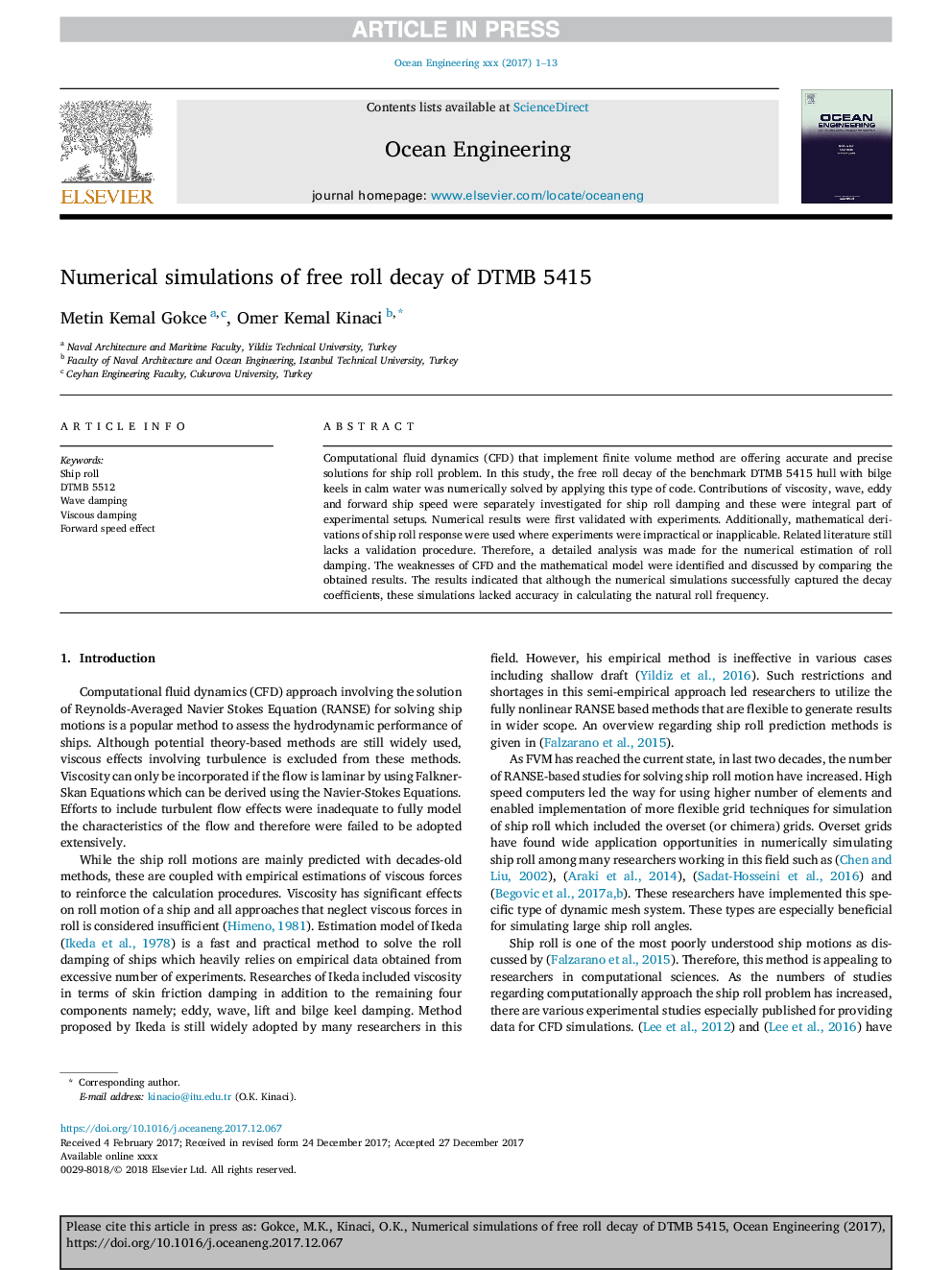| Article ID | Journal | Published Year | Pages | File Type |
|---|---|---|---|---|
| 8062456 | Ocean Engineering | 2018 | 13 Pages |
Abstract
Computational fluid dynamics (CFD) that implement finite volume method are offering accurate and precise solutions for ship roll problem. In this study, the free roll decay of the benchmark DTMB 5415 hull with bilge keels in calm water was numerically solved by applying this type of code. Contributions of viscosity, wave, eddy and forward ship speed were separately investigated for ship roll damping and these were integral part of experimental setups. Numerical results were first validated with experiments. Additionally, mathematical derivations of ship roll response were used where experiments were impractical or inapplicable. Related literature still lacks a validation procedure. Therefore, a detailed analysis was made for the numerical estimation of roll damping. The weaknesses of CFD and the mathematical model were identified and discussed by comparing the obtained results. The results indicated that although the numerical simulations successfully captured the decay coefficients, these simulations lacked accuracy in calculating the natural roll frequency.
Keywords
Related Topics
Physical Sciences and Engineering
Engineering
Ocean Engineering
Authors
Metin Kemal Gokce, Omer Kemal Kinaci,
